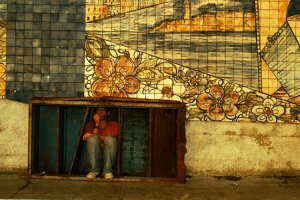Dilapidation of buildings in Cuba has something in common with the main character of the famous novel the Chronicle of a Death Foretold by Gabriel Garcia Marquez. It’s the fact that everybody knew that he would be finished off.

Similarly, all residents and authorities of each particular neighbourhood in Cuba know when a house or a building is about to collapse. Never before have there been so many announced falling buildings. They collapse almost daily, mainly in Havana.
Unlike in the novel by Garcia Marquez, there are no accidental coincidences that would hinder a timely action that would save human lives.
The Cuban National Institute for Housing says that only 61% of over 3 million houses and dwellings on the island are in good condition. The remaining 39% range from average to poor.
The official figures also show that over one million properties have been affected by various meteorological phenomena over the last 10 years. The government says that extreme weather conditions are to be blamed for cancellation of some of the announced State construction projects because all resources had to be redirected to areas affected by destructive phenomena.
Those who witness the sad spectacle of a building collapsing always ask (or hear somebody ask) the same question: “Why did the government wait for the building to collapse before offering the families alternative accommodation?”
The answer is simple: it is impossible for the government to provide shelter to all families living in buildings that are in bad condition or even face danger of imminent collapse, since it is a large part of the 39 % mentioned above. There’s only one possible way of dealing with this issue: to let the building collapse and only after that offer the inmates alternative accommodation.
Also, many families prefer staying in the dilapidated buildings and facing the danger of a collapse to moving to one of the State lodging houses, which seldom offer fair conditions for coexistence. Living in such places entails various risks such as that of theft, violence and bad sanitary conditions, and many obviously consider staying where they are the lesser of two evils.
The government has yet another strategy to compensate for its inability to improve housing in Cuba and stop the continuing deterioration of buildings. It’s the so-called self-help construction. One of my neighbours calls it “the eat and shit system” because the State subsidy suffices only for a construction (or reconstruction) of a habitable cabin of 25 square meters with a bathroom and a kitchen.
On the first Sunday in December, the official press informed about the consequences of the 36-hour long continuous rain over the capital of Havana: 49 collapsed buildings, 8 out of which were complete, and two lost lives.
Yet, so many years of living in ruins has taught us a lesson and we know that most buildings collapse after the rain stops and the sun rises, and so it happened. In the following days of December, the number of collapsed buildings in Havana grew to 135.

Leave a comment